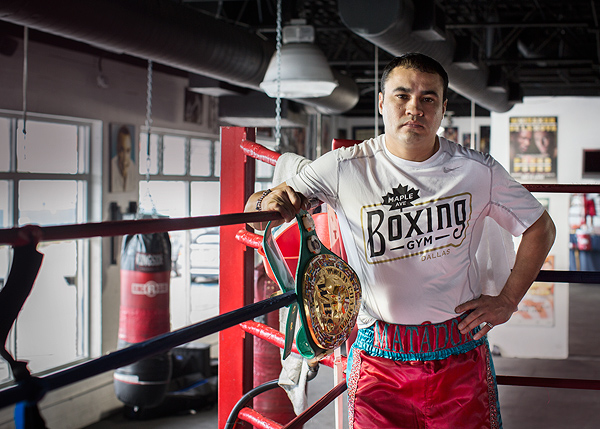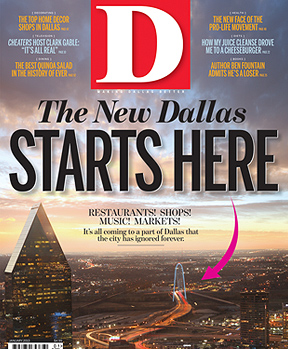At the Maple Avenue Boxing gym in Uptown, i stare at a small kettlebell weight with a dread disproportionate to its size. The weight represents the last exercise in a circuit of seven, and I am just about spent. But Jesús Chávez is just getting started with me. Moments later, my hands wrapped and shoved into boxing gloves, Chávez has me throwing jabs, hooks, and uppercuts at the pads on his hands, twisting and ducking between punches. When I botch the steps, he simply and graciously tells me, “You got hit,” (instead of actually hitting me) and we continue our dance. But when I turn my hip just right, and the punches land square, it feels good.
From his humble demeanor, you might not guess that Chávez is a former professional boxer who won two titles and was known as El Matador. But that barely scratches the surface of his story. As his first professional trainer, Richard Lord, says, “He’s one in a lifetime.”Born in Mexico, Jesús Gabriel Sandoval Chávez was a child when his family immigrated to Chicago. He had a bright future as an amateur boxer, but, at 16, he was busted for acting as lookout for an armed robbery. After serving four years in prison, Chávez was deported to Mexico.
He reentered the United States illegally and settled in Austin, where he found Richard Lord’s Gym. Lord convinced Chávez to fight professionally, and he debuted in 1994, quickly ascending the ranks of the super featherweight division. Three years later, though, the INS discovered Chávez and, based on his lone criminal conviction, once again deported him to Mexico.
There Chávez was denied the training facilities and personnel of a professional, especially frustrating given that he was in the prime of his career. Still, he continued to train and in 1999 defeated the Mexican national champion, Julio Alvarez. After several legal appeals, the INS pardoned Chávez, and he returned to the United States as a legal resident in late 2000.
The next year, he got his first chance at a belt, fighting WBC super featherweight champion (and still undefeated) Floyd Mayweather Jr. By the ninth round, Chávez had given the famously untouchable Mayweather one cut above the eye, but his corner stopped the fight before the next round. Lord, who disapproved of the decision, still believes Chávez could have won. “Mayweather did not knock him down, did not cut him,” he says. Chávez does not speculate that far. But he is adamant about one thing: “I think I am the toughest fight that Floyd’s ever had.”
Chávez eventually won the WBC title and then moved up to the lightweight division to face IBF title-holder Leavander Johnson in 2005. Chávez won the fight by technical knockout in the 11th round. Despite the beating he took, Johnson appeared coherent after the fight. But after walking back to the locker room, he collapsed and slipped into a coma. He died a few days later.
Johnson’s family was relentless in their support for Chávez, even inviting him to the funeral. They encouraged him to continue fighting, which he did after a 16-month layoff. But he was never the same boxer. After battling through injuries in both knees and shoulders, he retired in 2010. “With those four injuries and the passing of Leavander Johnson, that was just too many things,” Chávez says. His record stands at 44-8-0.
Only weeks into Chávez’s retirement, WBC legal counsel Robert Lenhardt introduced him to Arnie Verbeek, owner of the Maple Avenue Boxing Gym in Dallas. Verbeek is a passionate, middle-aged boxing enthusiast from the Netherlands with the inexplicable accent of a New Yorker. The two hit it off, and Verbeek invited Chávez to join the gym’s staff.
Verbeek started the gym in 2008. It was mostly for him and his workout buddies, but also for the community. “We came up with the idea that, if we built the gym between downtown and some of the less-desirable neighborhoods, then maybe it could be a bridge,” he says. True to Verbeek’s vision, the gym is filled with a cross-section of Dallas: young professionals who use boxing to stay in shape and at-risk youths who find a positive way to expend their energy.
The gym is also home to three young professional boxers. There is Alex Saucedo, who is 6-0 and now promoted by Top Rank; Maurice “Mighty Mo” Hooker, the fighter Chávez personally trains the most, who is 6-0 with one draw; and Errol “EJ” Spence Jr., who won his Showtime professional debut on November 9.
Now Chávez’s life is the Maple Avenue Boxing Gym. He spends six days a week there, working with everybody from professional up-and-comers to powderpuff newbies, like me, who have never thrown a legitimate punch in their lives. For Chávez, it means he remains tethered to boxing, the sport that has sustained him. “I want to teach people,” he says. “Just give an all-out boxing perspective.”
And as my introductory workout has taught me, the sport offers more visceral rewards.
As Chávez says: “It feels good to punch something sometimes.”






